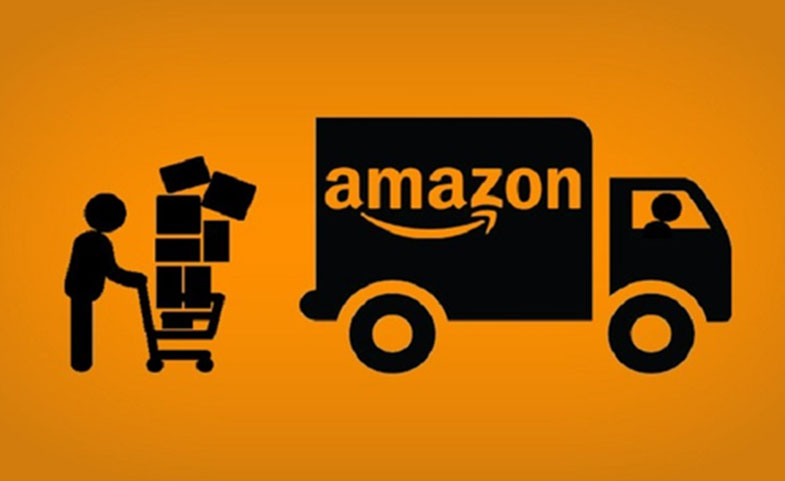Product returns are an inevitable part of the e-commerce business, and for Amazon sellers, navigating the returns process can be challenging. However, what if you could turn these returns into an opportunity for profit and customer loyalty? In this blog, we'll explore effective strategies to transform Amazon product returns into a revenue-generating aspect of your business.
Strategies to turn your Amazon Product Returns into Profits
Implement a Restocking Fee:
- Consider implementing a restocking fee for returned items. This fee can help cover the costs associated with processing returns, and it may deter customers from making unnecessary returns.
- However, be cautious with this approach, as it could potentially impact customer satisfaction.
Resell Returned Items as "Open Box" or "Refurbished":
- Products that are returned in good condition can be resold as "open box" or "refurbished" items at a discounted price.
- This allows you to recoup some of the losses and attract budget-conscious shoppers looking for a deal.
Leverage Amazon's Warehouse Deals:
- Enroll eligible returned items in Amazon Warehouse Deals. This program allows you to sell returned or slightly damaged products at a reduced price.
- It's a win-win situation – you recover some costs, and customers get a discount on a product they might not have considered at full price.
Bundle Returned Items:
- If you have multiple returned items with similar characteristics, consider bundling them together and selling them as a package deal.
- This can be an effective way to move inventory quickly and create value for customers.
Explore Secondary Marketplaces:
- Besides Amazon, there are various secondary marketplaces where you can sell returned items.
- Platforms like eBay, Facebook Marketplace, or specialized liquidation sites may provide additional opportunities to recoup losses.
Reassess Product Descriptions and Images:
- Analyze the reasons for returns. If common issues arise, such as inaccurate product descriptions or images, take steps to improve these elements.
- Enhancing the accuracy of your listings can minimize returns in the long run.
Engage with Customers During the Returns Process:
- Use the returns process as an opportunity to engage with customers.
- Seek feedback on why the product was returned and consider offering discounts or incentives for future purchases.
Investigate Trends and Seasonal Patterns:
- Evaluate return data to identify trends or seasonal patterns.
- Understanding why certain products are returned at specific times can help you adjust inventory levels, marketing strategies, and product listings accordingly.
Monitor and Improve Quality Control:
- Strengthen your quality control processes to minimize returns due to product defects.
- Regularly assess customer feedback, and if necessary, collaborate with suppliers to enhance product quality.
Implement a Return-to-Discount Program:
- Offer customers returning products the option to exchange them for a discount on a different item rather than a full refund.
- This encourages continued engagement and future purchases.
Create a Clearance Section:
- Establish a dedicated clearance section on your Amazon storefront for returned or open-box items.
- This provides a transparent outlet for discounted products and attracts bargain-seeking customers.
Collaborate with Liquidation Companies:
- Partner with liquidation companies that specialize in surplus or returned merchandise.
- This allows you to sell returned items in bulk, reducing the time and effort spent on individual listings.
Utilize Amazon Renewed Program:
- If your returned items are eligible, consider enrolling them in Amazon Renewed.
- This program allows you to sell certified refurbished products, providing customers with a like-new option at a lower price.
Offer Incentives for Store Credit:
- Encourage customers to choose store credit instead of a refund by offering additional incentives, such as an extra percentage discount on their next purchase.
- This helps retain revenue within your business ecosystem.
Implement Predictive Analytics:
- Leverage data analytics to predict potential returns.
- By understanding patterns and customer behavior, you can proactively manage inventory, marketing, and customer communication to reduce the likelihood of returns.
Introduce a Try Before You Buy Program:
- Implement a "Try Before You Buy" initiative, allowing customers to test products before committing to a purchase.
- While this may not eliminate returns entirely, it can reduce the number of returns driven by uncertainty.
Diversify Product Bundles:
- Create diverse product bundles that include both returned and new items.
- This strategy can appeal to customers seeking variety and value, providing an opportunity to sell returned items alongside new ones.
Enhance Customer Support Channels:
- Strengthen your customer support channels to address concerns promptly and efficiently.
- Providing clear information and guidance can lead to better customer satisfaction and potentially reduce the number of unnecessary returns.
Monitor Customer Reviews:
- Regularly monitor customer reviews to identify recurring issues.
- Use this feedback to make informed decisions about product improvements, updates, or clarifications in your listings, reducing the likelihood of future returns.
Conclusion:
Transforming Amazon product returns into profits requires a strategic approach that focuses on optimizing processes, reselling returned items creatively, maintaining customer satisfaction, and adapting to market trends. By implementing these comprehensive strategies, you can not only recover costs but also build a positive reputation for your brand, ultimately contributing to the long-term success of your Amazon business.


